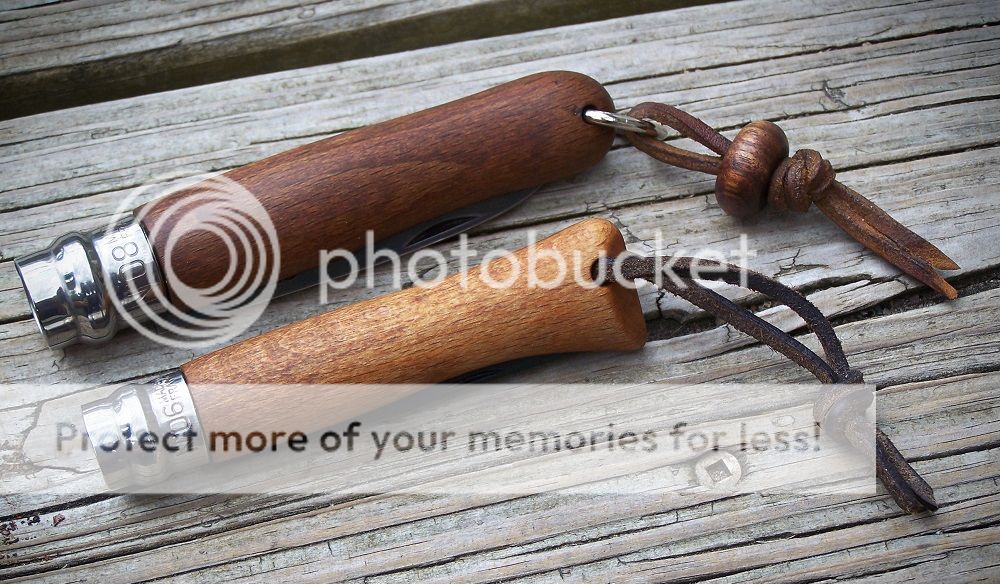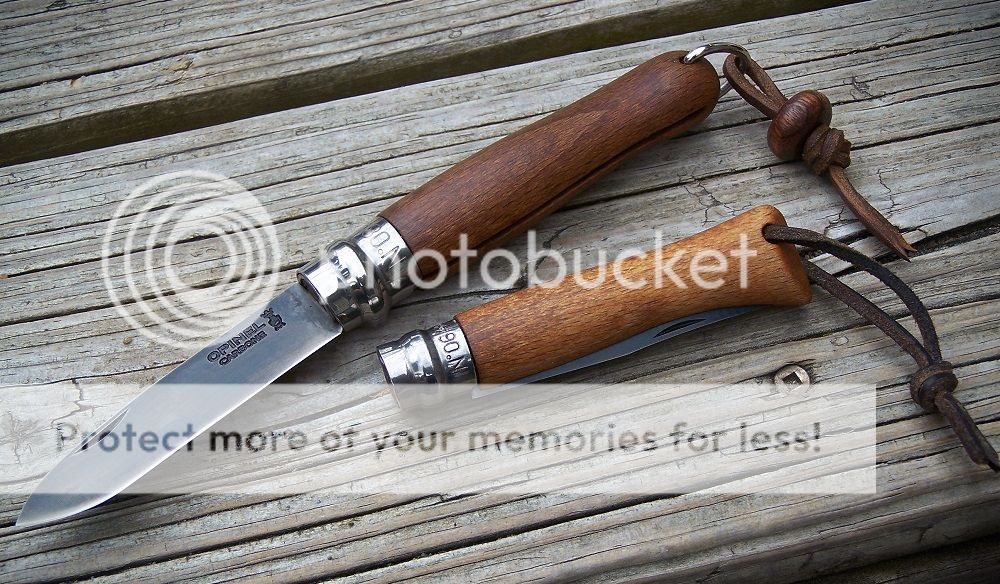I used Rit clothing dye (warm brown) for these. I microwaved the water to about coffee hot, then poured in the powdered dye and stirred it to dissolve. The knives all had their handles sanded well, though with only a medium-coarse paper (I forget what I used).
The dye-soaking lasted about five minutes, then I removed them and let the dye dry. Then rinsed the handles under running cold water until no more dye came off them. Let them dry again, then over several days wiped on about half a dozen coats of semi-gloss urethane.
All these were treated identically, but there are differences in depth of color. Well, shrug. They're natural materials not manmade ones, so some variation is to be expected.
I'm now thinking of making the #6 a dropoint, and I have already added a shallow "ramp" to the collar's lower edge to lock the blade closed.
Love 'em all.

Top to bottom: #9 carbon steel, #8 (garden model) stainless, and #6 in carbon steel.
The dye-soaking lasted about five minutes, then I removed them and let the dye dry. Then rinsed the handles under running cold water until no more dye came off them. Let them dry again, then over several days wiped on about half a dozen coats of semi-gloss urethane.
All these were treated identically, but there are differences in depth of color. Well, shrug. They're natural materials not manmade ones, so some variation is to be expected.
I'm now thinking of making the #6 a dropoint, and I have already added a shallow "ramp" to the collar's lower edge to lock the blade closed.
Love 'em all.

Top to bottom: #9 carbon steel, #8 (garden model) stainless, and #6 in carbon steel.












